The Arts of Contemplative Care

Wisdom Publications
199 Elm Street
Somerville, MA 02144 USA
www.wisdompubs.org
2012 Cheryl A. Giles and Willa B. Miller
All rights reserved.
No part of this book may be reproduced in any form or by any means, electronic or mechanical, including photography, recording, or by any information storage and retrieval system or technologies now known or later developed, without permission in writing from the publisher.
Library of Congress Cataloging-in-Publication Data
The arts of contemplative care : pioneering voices in Buddhist chaplaincy and pastoral work / edited by Cheryl A. Giles and Willa B. Miller.
p. cm.
Includes bibliographical references and index.
ISBN 0-86171-664-7 (pbk. : alk. paper)
1. Chaplains. 2. Pastoral care. 3. Pastoral counseling (Buddhism) I. Giles, Cheryl A., editor of compilation. II. Miller, Willa, editor of compilation.
BQ5305.C4A78 2012
294.361dc23
2012012179
ISBN 978-0-86171-664-7
eBook ISBN 978-1-61429-037-7
16 15 14 13 12
5 4 3 2 1
Cover design by Phil Pascuzzo. Author photo by Jewel Gilbert. Interior design by Gopa&Ted2. Set in ITC Galliard Pro 10.3/14.4.
Wisdom Publications books are printed on acid-free paper and meet the guidelines for permanence and durability of the Production Guidelines for Book Longevity of the Council on Library Resources.
Printed in the United States of America.
 This book was produced with environmental mindfulness. We have elected to print this title on 30% PCW recycled paper. As a result, we have saved the following resources: 18 trees, 8 million BTUs of energy, 1,853 lbs. of greenhouse gases, 8,352 gallons of water, and 529 lbs. of solid waste. For more information, please visit our website, www.wisdompubs.org. This paper is also FSC certified. For more information, please visit www.fscus.org.
This book was produced with environmental mindfulness. We have elected to print this title on 30% PCW recycled paper. As a result, we have saved the following resources: 18 trees, 8 million BTUs of energy, 1,853 lbs. of greenhouse gases, 8,352 gallons of water, and 529 lbs. of solid waste. For more information, please visit our website, www.wisdompubs.org. This paper is also FSC certified. For more information, please visit www.fscus.org.
To my spiritual mentor Dolores, who taught me to be mindful, and Norah, the next generation of pioneers.
Cheryl A. Giles
To the many pioneers in the field of contemplative care that have uplifted and inspired us, past and present.
Willa B. Miller
Publishers Acknowledgment
The publisher gratefully acknowledges the ongoing generous support of the Hershey Family Foundation and in particular the contribution toward the printing of this book.
Table of Contents
Pat Enkyo OHara
 HIS VOLUME comes at a perfect time. Two streams are converging: a current of recognition that something is missing in the secular, commercial approaches to caretaking, and at the same time, a wave of realization in Buddhist communities that our practices of contemplation, awareness, and presence render us uniquely suited to fill this gapto provide compassionate caretaking.
HIS VOLUME comes at a perfect time. Two streams are converging: a current of recognition that something is missing in the secular, commercial approaches to caretaking, and at the same time, a wave of realization in Buddhist communities that our practices of contemplation, awareness, and presence render us uniquely suited to fill this gapto provide compassionate caretaking.
What does that kind of care look like? I asked an oncology nurse this questionshe smiled and said, Theres just something about the Buddhist chaplainssimply the way they walk down the hall seems to put people at ease.
A more ancient image of compassionate care is Avalokiteshvara, the bodhisattva of compassion, portrayed as having a thousand hands and eyes, which she uses to respond to the suffering of the world. In one ancient Buddhist tale, a seeker asks, What exactly does she do with all those hands and eyes? And the answer, simply given, is, It is like reaching behind you to adjust your pillow at night. In other words, the way of compassionate care is as natural as your spontaneous gesture while at ease.
When we think of the training and practice required for intelligent contemplative care, we might object to the simplicity of this response. But looking a little more deeply, we can recognize the truth that it points to: effective caretaking originates from a rather ordinary quality that can be quite challenging to acquiretrue presence, a grounding in the naturally arising reality of the moment.
Whether it is the anguish of a sickbed, the anger in a correction facility, or the fear beneath the order of a military life, contemplative care originates from a heart/mind that is clear and responsive, grounded in interdependence. And the healing goes both ways. Practicing contemplative care strengthens the caretakers own Buddhist practice, offering moment-to-moment opportunities to face the suffering in oneself as well as in others, and to hold it in contemplative space.
I congratulate the editors for bringing together these trailblazing voices. Together, they express a path of practice that is opening for contemporary Buddhists to make a desperately needed difference in todays world.
Roshi Pat Enkyo OHara, PhD, is the abbot of the Village Zendo. A Soto Zen priest and certified Zen teacher, she received Dharma transmission in both the Soto and Rinzai lines of Zen Buddhism, through the White Plum Lineage. Roshi currently serves as the guiding spiritual teacher for the New York Center for Contemplative Care. She also serves as cospiritual director of the Zen Peacemaker Family, a spiritual, study, and social action association.
Judith Simmer-Brown
 HE BOOK you hold in your hand is pioneering. It shares the work of courageous contemporary Buddhist practitioners in the West who bring the depth of their meditation practice into direct service and healing in their work as chaplains. Two skilled editors have solicited and selected chapters that illustrate how these chaplains are creating secular parishes in the midst of the most painful environments of our changing world, from the hospital to the prison, the military, and hospices. They counsel college students and parents raising Buddhist children, and they address issues of racism, classism, and ageism. For every setting, they describe how to be simply present, to not turn away from suffering, and to generate the heart of compassion in ways that heal.
HE BOOK you hold in your hand is pioneering. It shares the work of courageous contemporary Buddhist practitioners in the West who bring the depth of their meditation practice into direct service and healing in their work as chaplains. Two skilled editors have solicited and selected chapters that illustrate how these chaplains are creating secular parishes in the midst of the most painful environments of our changing world, from the hospital to the prison, the military, and hospices. They counsel college students and parents raising Buddhist children, and they address issues of racism, classism, and ageism. For every setting, they describe how to be simply present, to not turn away from suffering, and to generate the heart of compassion in ways that heal.
Each chapter is fresh and immediate, full of experiential insights. We find ourselves beside these chaplains as they speak with patients ravaged by disease, with families who have just lost a child, with soldiers agonizing over the acts they are forced to commit, or with prisoners beset by regret. They share the wit and directness of the dying and the naked honesty of those who have lost everything. Humbly, they tell us of the lessons they themselves have learned. The inherent dignity, wisdom, and bravery of their clients come through on every page, and we can see that kindness is the greatest healing force.
These contributors come from a variety of Buddhist lineages, from Japanese and Korean Zen to Tibetan Vajrayana and Shambhala, to Pure Land, to Theravada vipassana; some are seasoned Buddhist teachers, others are more recent practitioners. A third of the contributors are my colleagues, friends, or sangha brothers and sisters; another third are my former students. Many others I know through reputation and through the lives of clients they have touched. Still, I learned deeply from this book about what it is actually like to be a Buddhist chaplain on the job.
In most settings, these chaplains are the only Buddhists in a Judeo-Christian or purely secular world. Sometimes they feel isolated or groundless, or fearful and inadequate, when they do not know what to do to help. Most clarify that it is not useful to think of themselves as Buddhistthey are interfaith chaplains who do whatever is needed. We can sense them stepping closer to their clients, holding their hands, and supporting them emotionally.
Next page
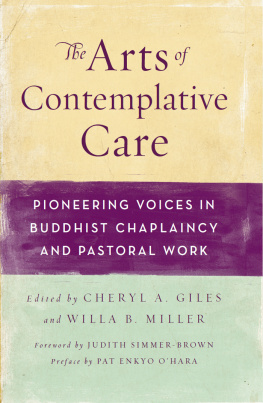
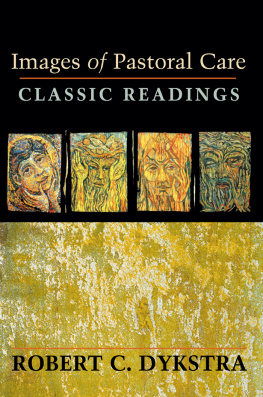
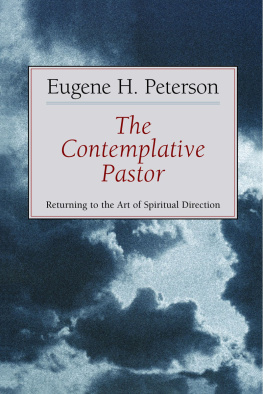



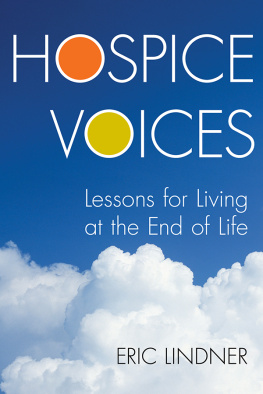
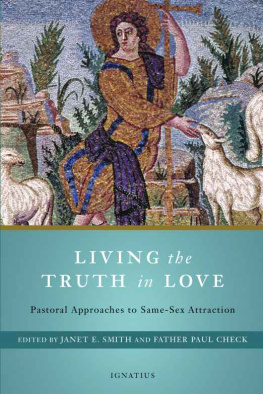

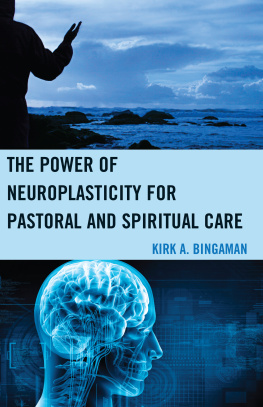




 This book was produced with environmental mindfulness. We have elected to print this title on 30% PCW recycled paper. As a result, we have saved the following resources: 18 trees, 8 million BTUs of energy, 1,853 lbs. of greenhouse gases, 8,352 gallons of water, and 529 lbs. of solid waste. For more information, please visit our website, www.wisdompubs.org. This paper is also FSC certified. For more information, please visit www.fscus.org.
This book was produced with environmental mindfulness. We have elected to print this title on 30% PCW recycled paper. As a result, we have saved the following resources: 18 trees, 8 million BTUs of energy, 1,853 lbs. of greenhouse gases, 8,352 gallons of water, and 529 lbs. of solid waste. For more information, please visit our website, www.wisdompubs.org. This paper is also FSC certified. For more information, please visit www.fscus.org. HIS VOLUME comes at a perfect time. Two streams are converging: a current of recognition that something is missing in the secular, commercial approaches to caretaking, and at the same time, a wave of realization in Buddhist communities that our practices of contemplation, awareness, and presence render us uniquely suited to fill this gapto provide compassionate caretaking.
HIS VOLUME comes at a perfect time. Two streams are converging: a current of recognition that something is missing in the secular, commercial approaches to caretaking, and at the same time, a wave of realization in Buddhist communities that our practices of contemplation, awareness, and presence render us uniquely suited to fill this gapto provide compassionate caretaking.